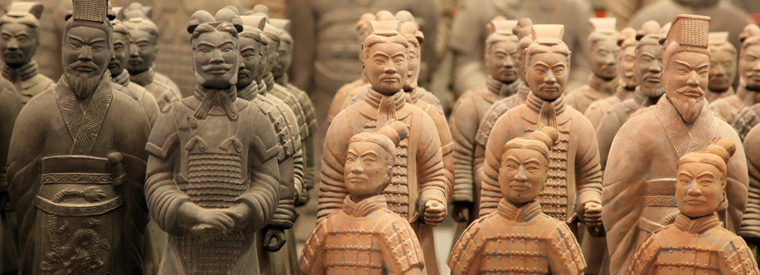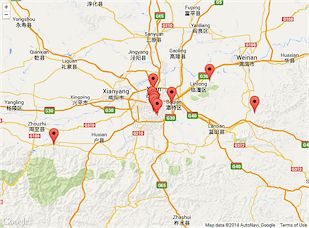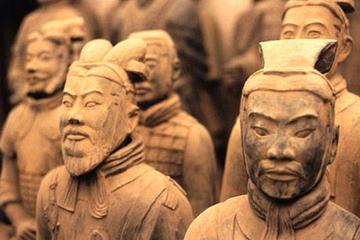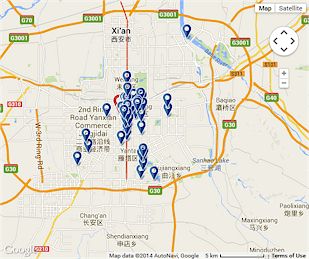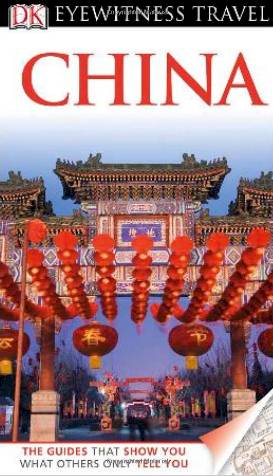« CHINA • DISCOVER CHINA • Xian
Discover magical Xian

The culture of Xi'an descends from one of the world's earliest civilizations. The Guanzhong Ren culture is considered the cultural antecedent of Xi'anese; their features are satirized as the 'Ten Strangenesses of Guanzhong Ren'. Xi'an is also known for the 'Eight Great Sights of Chang'an', a collection of scenic areas in the region.
• Destination Xian & Surrounds
A | B | C | D | E | F | G | H | I | J | K | L | M | N | O | P | Q | R | S | T | U | V | W | X | Y | Z
» Banpo Village

Banpo Village, Banpo Bowuguan in Mandarin, is a well preserved archaeological site just east of Xian in the Yellow River Valley, which carbon dating suggests, dates back to over 6,000 years ago. It is thought to be one of the oldest human settlements in China. This Neolithic village once consisted of a ditch, a defensive moat against animals and intruders as well as about 45 circular mud and wood houses with thatched roofs, that can be seen as the predecessors of later Chinese architecture …
» Bell Tower (Zhonglou)
The word “tower” doesn’t quite do justice to the enormous structure of the Xian Bell Tower - or Zhonglou, rising on an imposing square base to a series of terraces and three graceful pagoda roofs. This is nothing less than the symbol of Xian, positioned at the meeting point of its north-south and east-west axes. Originally built in 1384 under the mighty Ming Dynasty, it was subsequently moved to ensure it retained its central position, with its base later rebuilt …
» Big Wild Goose Pagoda (Dayanta)
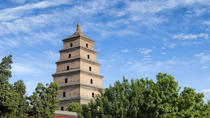
While the Big Wild Goose Pagoda - or Dayanta - follows the familiar pagoda format of successive levels diminishing in size the higher they get, this solid stone tower is largely free of the frills associated with such buildings. One of Xian’s oldest structures, it was built in 652 and originally had 10 levels, though the top 3 were later lost in an earthquake. The pagoda played an important role in the spread of Buddhism in China …
» Drum Tower (Gulou)

The Drum Tower - or Gulou - was built during the Ming Dynasty, just a few years before the neighboring Bell Tower. It is largely in the same style as that building, though in a rectangular rather than a square format. From here sunset was marked by the beat of the drum, sunrise having been announced in the Bell Tower. Drums are a big deal here, in fact China’s biggest percussion instrument sits in the building’s center. There’s a smaller drum which you can beat three times for good luck …
» Emperor Qin's Mausoleum
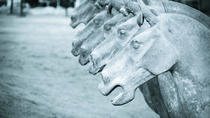
While the terra cotta warriors have been mostly excavated, their entombed emperor has been resting undisturbed in his mausoleum of underground caverns for over two millennia. Emperor Qin Shi Huang, born in 259 B.C., was China’s first emperor. He conquered six warring kingdoms, joined them and created the first unified nation of China – something no one had managed before. When he died, Qin was buried with the usual artifacts and even live people such as concubines …
» Guangren Lama Temple

There is only one Tibetan Buddhist monastery in Shaanxi Province: the Guangren Lama Temple. Nestled into the north-western corner of Xian’s city wall, this temple was built in 1705 as a temporary residence for the Grand Lamas for when they passed through this area on their way to Beijing to meet with the emperors. The architecture of the temple, a mix between Chinese and Tibetan, is a tribute to the long standing cultural relations between the Tibetans and the Han people …
» Louguantai National Forest Park

Louguantai National Forest Park is the ideal place to visit if you want to get out of the big city and into rural China’s fascinating nature. The park wasn’t only popular with ancient emperors and poets, but today is maybe still best known for being the perfect spot to practice Taoism. Here, the founder of Taoism, Laozi, wrote the fundamental text to the harmonic Yin and Yang philosophy called the Tao Te Ching. He was also supposed to have taught his ideas in these forests for a while …
» Muslim Quarter

Right behind the Drum Tower, you can find the Muslim Quarter of Xian. In Chinese, it is also known as Huimin Jie, which is the home of the majority of the Muslim Hui minority. The Hui men are usually easily recognizable by their typical white hats, sitting in front of the houses and enjoying the sun, while the women wear headscarves but don’t cover their faces. Once, Muslim traders traveling the Silk Road settled here with their Chinese wives …
» Shaanxi History Museum
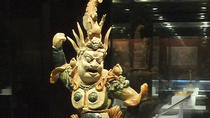
The city of Xian is of inestimable significance in the history of China, having long been a cultural powerhouse as well as the capital of numerous dynasties. The Shaanxi History Museum, a modern building echoing classic Tang Dynasty architecture, offers a time-traveling tour of the city and its surrounding province. Much of the enormous collection is the result of archeological digs in the area, including early tools and vessels from a Neolithic village …
» Shu Yuan Men Street
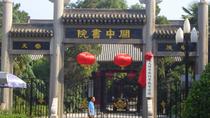
Valuable historical monuments attract tourists from all over the world to Xian. Among them is the Shu Yuan Men Street, which was once the location of the famous Guanzhong Shuyuan Academy, an institute of classical learning and one the most important schools in Shaanxi Province. Today, the road remains dedicated to different types of study and everything revolves around art and culture. On both sides of the black stone road …
» Tang Dynasty Dinner Show

The Tang Dynasty (roughly speaking the 7th to 9th centuries AD) was a highpoint in Xian’s long and illustrious history. If you don’t mind forgoing a little historical accuracy in the name of entertainment, the Tang Dynasty Dinner Show offers a nightly song-and-dance gala which evokes the color and spectacle of this golden age. Traditional instruments set the musical scene, with choreography and costumes reflecting Xian’s openness to outside influence …
» Terracotta Warriors and Horses Museum
The 1974 discovery of thousands of life-sized Terracotta Warriors near Xian was one of the archeological sensations of the 20th century. The figures date from 210 BC and were meant to guard the first emperor of China in the afterlife. A huge statue of the emperor now guards the entrance to the Terracotta Warriors and Horses Museum, undeniable high point of any trip to Xian. To avoid disturbing these priceless treasures, they were left in situ with enormous structures now shielding them from the elements …
» Tomb of Emperor Jingdi (Hanyangling)
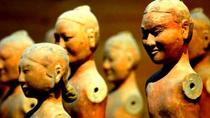
In addition to the world-famous terra cotta warriors, another excavation site of a famous Chinese emperor can be found in Xian. Emperor Jingdi reigned from 11-141 BC and unlike other emperors, he had a very passive approach to ruling. As a staunch follower of Confucianism, he was a capable leader and tried to improve the lives of his subjects by reducing taxes and avoiding diplomatic conflicts. Accordingly, his reign is considered a golden era for the people and the imperial family …
» Xian City Wall (Chengqiang)
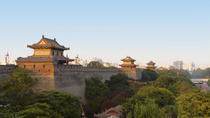
Xi’an has one of the most extensive and best-preserved defensive walls in the world. This colossal structure was started under the Ming Dynasty in 1370, a few years before the Drum and Bell Towers, and replaced an earlier wall which encompassed a much larger area. You can get an idea of the Xian City Wall's - or Chengqiang - extraordinary thickness on the wide terrace which surmounts it. There are 98 ramparts, each with its own sentry house, as well as 18 gateways …
» Xian Museum & Small Goose Pagoda (Xiaoyanta)

Xian Museum is one of the city’s most recent attractions, and stands in an ensemble of buildings both ancient and modern which provide a refuge from busy streets. Like the Shaanxi History Museum, it contains many pieces from archeological digs in the area, as well as jade ornaments and impressive calligraphy exhibits. It is particularly noted for its collection of Buddhist art and artifacts. The modern museum building echoes classic Chinese architecture …
« CHINA • DISCOVER CHINA • Xian


